
Different trees for different bees
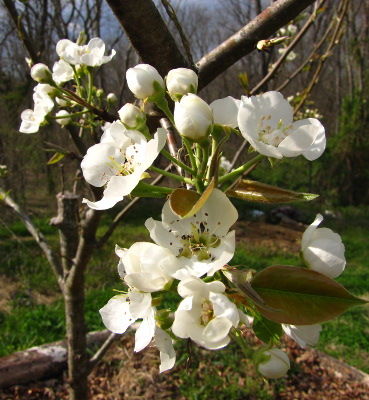
All of the websites say
you have nothing to lose by topworking
your fruit trees,
but that's not quite true. You do lose something very important
--- time.
Our young pear trees
bloomed enough to produce a couple of fruits last year, and judging by
the limbs I left behind this spring, the trees would have been loaded
this fall if I hadn't lopped off the tops. But I figure, better
delicious pears in two years than pears I consider insipid now.
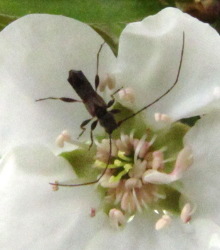
Of course, I got sucked
into photographing pollinators while I was out looking at the fruit
trees, and I was interested to see that the peaches and pears have very
different insects buzzing around their flowers. The pear trees
had attacted a few small bees and a wasp, but the most common
pollinator was the soldier beetles (or maybe long-horned beetles or
both?) shown below and to the left.
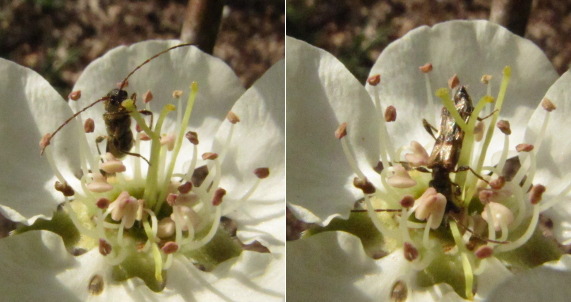
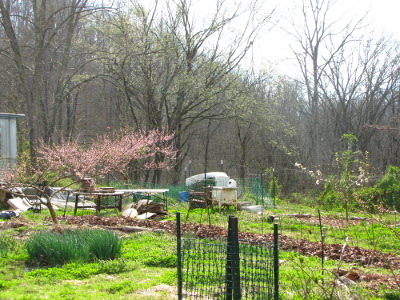 In stark contrast, I spent
two minutes walking around our biggest peach tree and saw honeybees, bumblebees, wasps, butterflies, several
types of smaller wild bees, a greater
bee fly...but no
beetles. I wonder if the pollinator preference is due to the type
of tree, or is just a byproduct of the bigger mass of peach flowers
drawing in more aerial pollinators. (That's an elm tree blooming
in the far background, by the way.)
In stark contrast, I spent
two minutes walking around our biggest peach tree and saw honeybees, bumblebees, wasps, butterflies, several
types of smaller wild bees, a greater
bee fly...but no
beetles. I wonder if the pollinator preference is due to the type
of tree, or is just a byproduct of the bigger mass of peach flowers
drawing in more aerial pollinators. (That's an elm tree blooming
in the far background, by the way.)
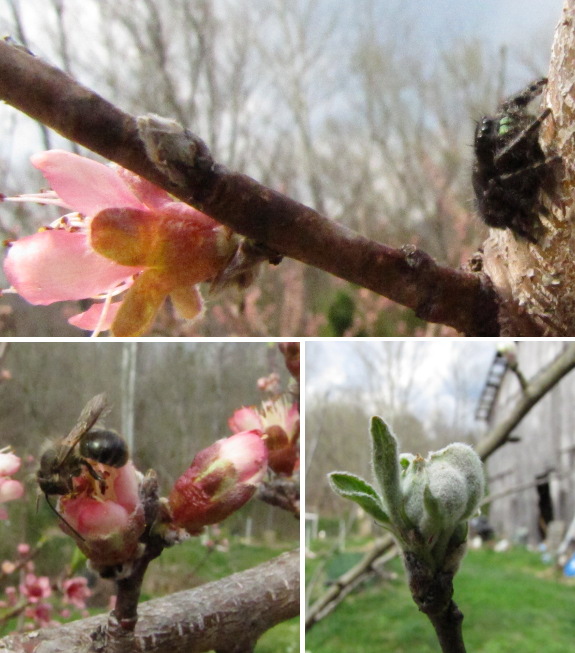
Three more gratuitous
spring photos, counterclockwise from top --- a hungry spider, the most
common bee out yesterday, and coming attractions (apple buds).
Want more in-depth information? Browse through our books.
Or explore more posts by date or by subject.
About us: Anna Hess and Mark Hamilton spent over a decade living self-sufficiently in the mountains of Virginia before moving north to start over from scratch in the foothills of Ohio. They've experimented with permaculture, no-till gardening, trailersteading, home-based microbusinesses and much more, writing about their adventures in both blogs and books.
Want to be notified when new comments are posted on this page? Click on the RSS button after you add a comment to subscribe to the comment feed, or simply check the box beside "email replies to me" while writing your comment.
